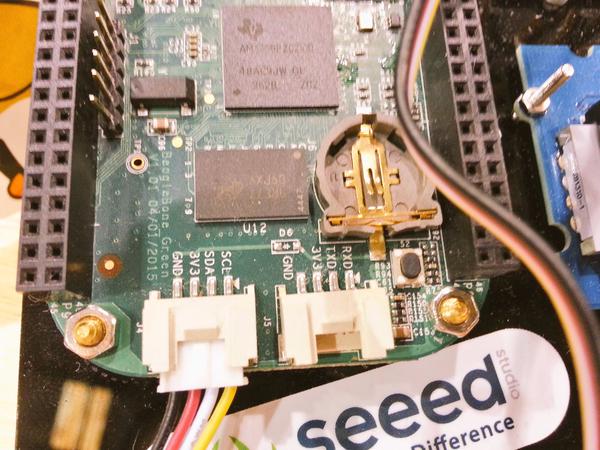The new addition to the BeagleBone family – the upcoming SeeedStudio’s BeagleBone Green – has some changes, and they offer new limitations, but also new options. (for more info, read parts 1, 2 and 3)
Some of the changes are removals, like the HDMI chip and the barrel jack for 5V, and some are additions like the RTC and Grove connectors. Each change can be a plus to the user, as long as he knows what to expect.

HDMI support has been unimportant for a number of people who just want to setup a headless system, and do not need HDMI support at all. This frees up 20 pins, which on the BBB are also assignable to GPIO, PWM and UART ports. For people needing more of those ports, this could make it easier for them. The BeagleBone Black could also free up those ports when disabling the HDMI virtual cape in the Cape Manager, but if you do so, it is now an option to not have to worry about that at all. See http://elinux.org/Beagleboard:Cape_Expansion_Headers for more info on this.
A barrel jack for the 5V input is missing on the Green’s design, nowadays consensus seems to have set to using microUSB, so adhering to that frees up room on the board, and removes one clunky connector. The barrel was a more study design, so if you will have strong vibrations in your application, you might want to look into making extra sure the connection does not get severed.
An RTC (real time clock) is a great add-on, among others for the people using the built-in random number generator, as it gives them a good time source as well, so it could do time-sensitive encryption protocols from startup, without having to rely on unverified sources before connecting directly. There are a lot of other uses for a board that can reliably keep time even when the board is not powered, without having to rely on external sources. The space to add the battery is provided by the removal of the HDMI chip.
But a great asset will be the addition of the two Grove ports. SeeedStudio’s Grove is a system of base boards, Stems (like the BeagleBone Green) provide the processing power, and the Twig modules provide sensory input and output. There are a number of different connection types, but as there are only two of them on the board, I will concentrate on those for now.
I2C (pronounced IsquareC): This is a protocol for IC to IC communication, and it can be used my multiple modules chained together. They can be individually addressed by a hex value. There are a lot of Grove modules that can be used this way, see this list on the Seeed Wiki. A lot of the modules are IMU’s (Inertial Measurement Unit) that can sense acceleration, orientation and more. But also the small OLED screens could easily be connected to a BeagleBone Green now, for status updates, or with some buttons even a full user interface.

UART: A serial communication method, that can be used to communicate between computers, and other things like the modules listed in the Seeed Wiki. This includes things like a serial camera and wireless connection modules.
These devices can also be connected via the expansion headers on the other BeagleBone’s, but having a dedicated connector can make things a lot easier and faster to get setup.
These improvements are not earth-shattering, they are refinements that can make the BeagleBone Green a more interesting platform for builders that do not need some parts of what the Black offers, while retaining everything we have learned to love from the BeagleBone series.
The Grove line of products also offer a lot of other modules, like Analog and Digital Twig’s, and these can also be used with the BeagleBone Black as well as Green, you just need to use Grove to Male Jumper wires. These cables are also useful if you need access to more UART or I2C ports.
I am interested to see if there will also be kits to take advantage of BeagleBone Green’s advantages, but there has not been any information on that yet.
The BeagleBone Black has almost sold a quarter of a million boards, as seen in the docs, so I hope the addition of the BeagleBone Green will add even more users to this already very popular platform. I cannot wait till the release date of 19th of June!
I also want to thank the people of SeeedStudio for working with me on this series, they must grow tired of my constant questions, but try to keep me informed as best they can 🙂 Keep watching this space for more info 😛
And here is Part 5!